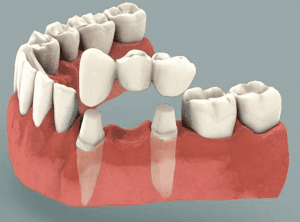Dental Bridge
A Dental bridges is a fixed dental device that is used to replace missing teeth. There are several different types of bridges available, and your dentist will discuss with you which may be most appropriate. Porcelain bridges are the most common, as they most resemble natural teeth. A bridge is usually attached to anchoring teeth, known as abutment teeth, and are attached with pontics or artificial teeth. They fill the gap created by one or more missing teeth. While a dental bridge is highly durable, they may need to be repaired or replaced over time. The Confi Dental Clinic is located near Dickinson, Tx is the dentist office near me now .
Common Reasons For Getting A Fixed Bridge
- Fill missing teeth
- Maintain natural face shape
- Prevent tooth drift
- Improve chewing and speaking ability
- Better smile
- Replace poorly functioning removable false teeth
A dental bridge usually requires two visits. The first is to create an accurate mould and to prepare the remaining teeth for anchoring. The bridge is then prepared in a dental laboratory and inserted on your second visit. Depending on complexity and individual circumstances, more than two visits may be required for a successful attachment.
You might have a little sensitivity in the teeth to which your bridge is attached in the days following your appointment. This is just because your dentist has activated the nerves in these teeth while working on them. The sensitivity should wane in the days that follow. Many patients find that chewing and speaking with a bridge is a little awkward at first, especially if the teeth have been missing for some time. However, the body adapts quickly, and before long, you will be able to chew on your bridge just like you would a natural tooth.
Call us at (281) 720-3500 or visit www.confidentaltx.com to schedule your appointment




Comments
Post a Comment